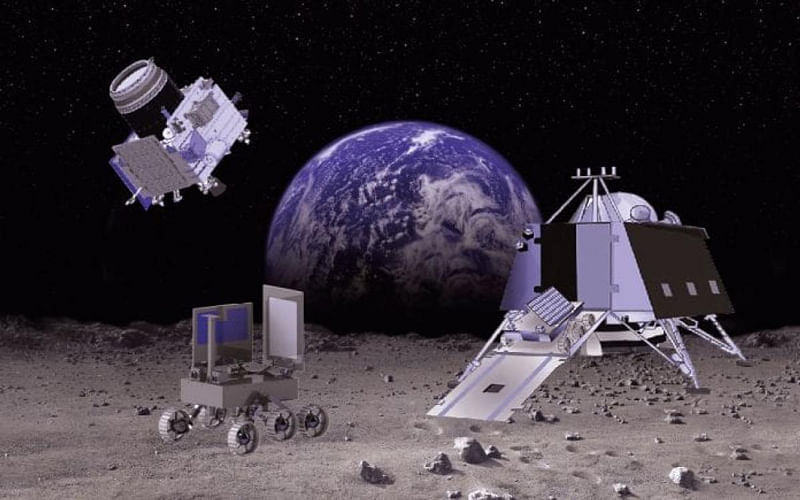
Getting closer to an unprecedented landing near the moon’s South Pole on September 7, Chandrayaan-2 completed yet another orbit-lowering manoeuvre on Wednesday morning.
What is orbit-lowering? Why is it important?
When it was first injected into lunar orbit, Chandrayaan-2 went around the moon in an oval orbit that took it far from the surface of the moon for a significant amount of time. Isro wants the spacecraft to be in a circular orbit 100 km above the lunar surface so that the spacecraft is at that distance always and its instruments can observe and image the moon consistently for a year. Orbital-lowering in steps is necessary to get Chandrayaan-2 into that circular orbit. Currently, the spacecraft is in a 179 km X 1,412 km orbit. It will get into the desired 100 km X 100 km orbit with one more manoeuvre by September 1.
What happens after that?
The spacecraft will release India’s first lunar lander Vikram on September 2, in preparation for its much-awaited descent and landing on September 7, leaving behind only the orbiter component of the spacecraft in orbit. The orbiter will continue to communicate with the lander and help it determine the final landing site on the moon through its onboard Orbiter High Resolution Camera (OHRC). This is critical since the landing site will have to be flat, inclined at no more than 12 degrees. The images taken by the OHRC will be relayed back from the orbiter to Isro's Earth station to analyse whether the site is safe for landing or not. To ensure that the images are sharp and precise, the OHRC will capture the landing site over the course of two orbits. The area covered will be a swath 12 km X 3 km, with a ground resolution of 0.32 metres.
What’s this much-quoted “terrifying 15 minutes” of the Chandrayaan-2 mission?
A day after Vikram, with the Pragyaan rover in its belly, disengages from the spacecraft, it will undergo a short ‘retro de-orbit’ manoeuvre to ensure normalcy. On September 3, the spacecraft will gradually descend to a lunar orbit 35 km X 97 km. Vikram’s parametres will be checked and rechecked for the next three days, in preparation for the final descent. That final descent, which starts at about 30-35 km above the lunar surface, is what Isro Chairman K Sivan described as the “most terrifying 15 minutes” of the entire mission.
What will happen on September 7?
The lander's final powered descent will begin precisely at 1.40 am on September 7. After it descends to an altitude of about 400m, Vikram will hover over the moon’s surface for 12 seconds. The objective: one final look at the landing site.
Won’t lunar dust affect Vikram?
All engines onboard Vikram will be fired to reduce its velocity so that the touchdown is safe and soft. The mission team has opted to achieve the last 10 metres of descent in 25 seconds. However, touching down with multiple engines firing could trigger moon dust. Isro’s plan to avoid the dust is this: at a height of 13 metres, the four corner thrusters on the lander will be switched off. Only the single engine in the centre will be switched on so that the dust is scattered horizontally, clearing the site for landing.
What about the Pragyaan rover?
Some three hours and 15 minutes after Vikram lands, Pragyaan will wheel out of the lander’s belly and deploy its solar panels. In one lunar day, equivalent to 14 Earth days, Pragyaan will cover a distance of about 500m. The speed: one centimetre per second.